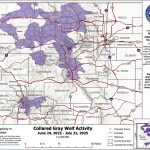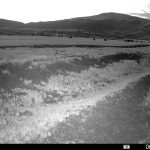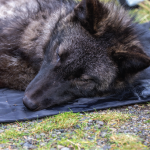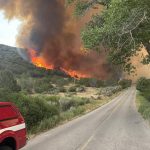Where Colorado’s collared gray wolves were in July
The latest map from Colorado Parks and Wildlife shows wolves in familiar areas
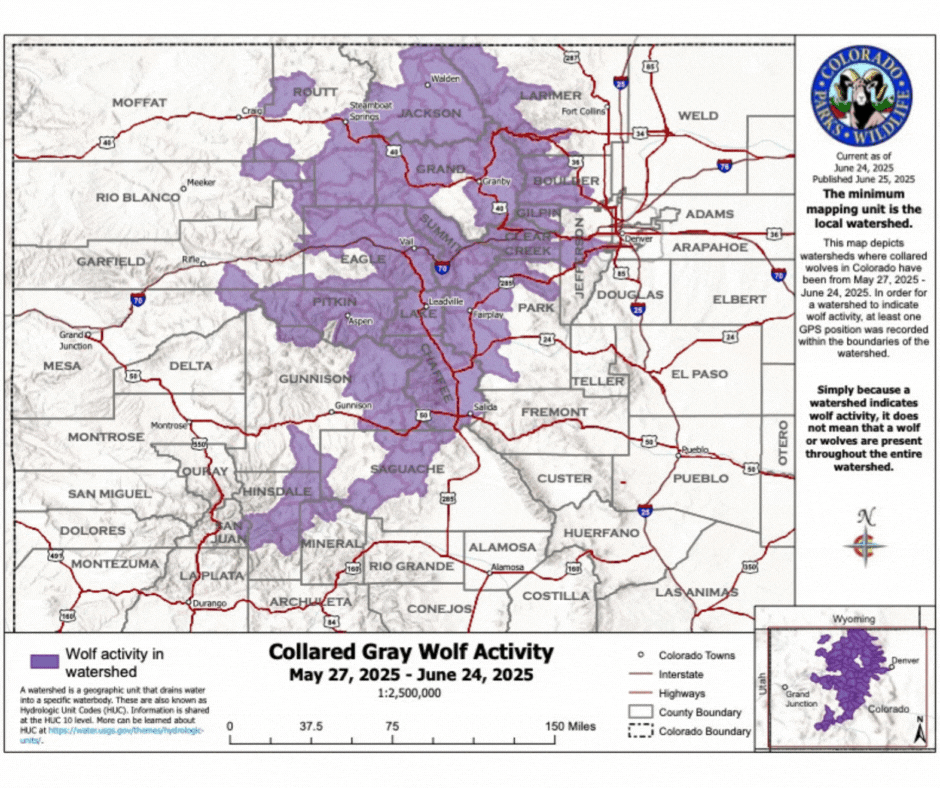
As Colorado’s gray wolf population increases with four new groups of pups, the reintroduced animals continue to stick to familiar watersheds across the Western Slope.
In the latest map from Colorado Parks and Wildlife — which shows activity between June 24 and July 22 — the wolves were active in watersheds across many northwest counties, including Eagle, Pitkin, Garfield, Routt, Jackson, Moffat, Rio Blanco, Summit and Grand counties.
There is a pocket highlighted on the map which includes several southwest watersheds in La Plata, Hinsdale, Mineral and San Juan counties as well as activity in Lake, Chaffee and Park counties in the central part of the state.
While the activity pushed slightly east into a watershed in western Larimer County, fewer watersheds brushing up against the Front Range are highlighted on this map compared to the previous two released by Parks and Wildlife, which showed some activity in western watersheds within Boulder, Jefferson, and Denver counties.
If a watershed is highlighted, it means that at least one GPS point from one wolf was recorded in that watershed during the 30 days. GPS points are recorded every four hours or so.
The map comes a week after Parks and Wildlife confirmed that it has three new wolf packs denning in northwest Colorado: the King Mountain Pack in Routt County, the One Ear Pack in Jackson County and the Three Creeks Pack in Rio Blanco County. The state’s fourth wolf pack, the Copper Creek Pack, is denning in Pitkin County.
A pack is considered formed once two adults mate and have pups. The agency does not yet know how many pups were born, but will reportedly have a more reliable count later in the summer once the youngest wolves begin venturing further out from the den. For now, the denning activity means that the animals will stick closer to these “rendezvous sites.”
While the movements on the July map appear more narrow than some of the previous maps, Parks and Wildlife said that the animals are making broad movements. One particular wolf — a female from British Columbia — has traveled extensively since being released in Eagle County in January.
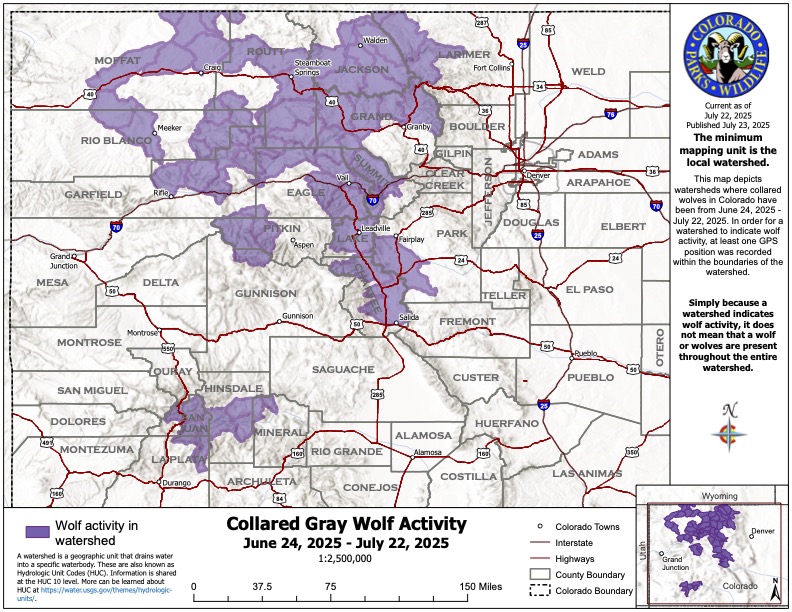
At the July Parks and Wildlife Commission meeting, Eric Odell, the agency’s wolf program manager, shared that this one wolf traveled 2,469 miles between Jan. 16, when she was released in Eagle County, through June 30. This is about the equivalent of traveling from Denver to Nashville — and back.
This wolf has averaged around 15 miles a day, making huge circles across the state — from Eagle County to Grand Junction, down through Middle Park to Gunnison, Montrose and back around again. According to Odell, she has not stopped moving but continued to circle western Colorado.

Support Local Journalism

Support Local Journalism
Readers around Glenwood Springs and Garfield County make the Post Independent’s work possible. Your financial contribution supports our efforts to deliver quality, locally relevant journalism.
Now more than ever, your support is critical to help us keep our community informed about the evolving coronavirus pandemic and the impact it is having locally. Every contribution, however large or small, will make a difference.
Each donation will be used exclusively for the development and creation of increased news coverage.


